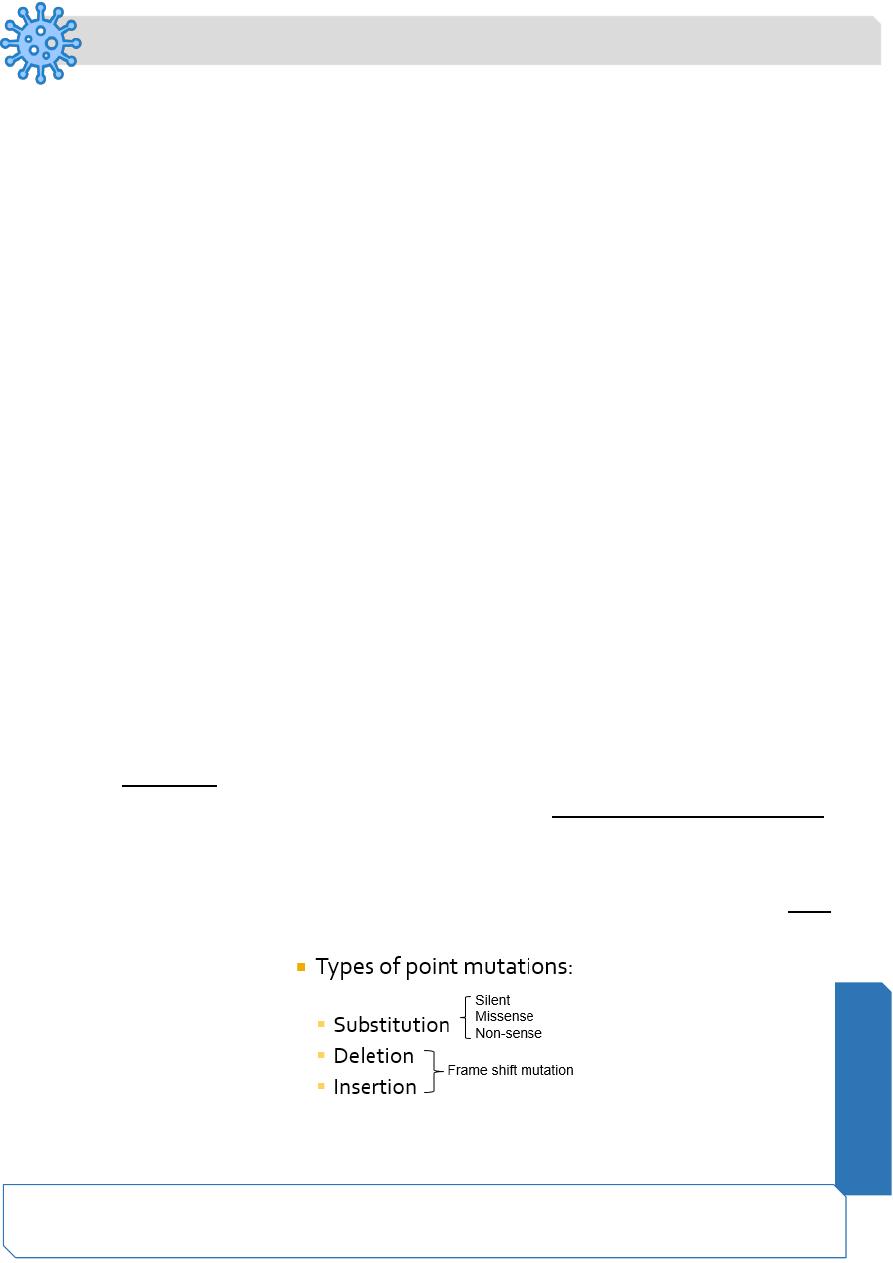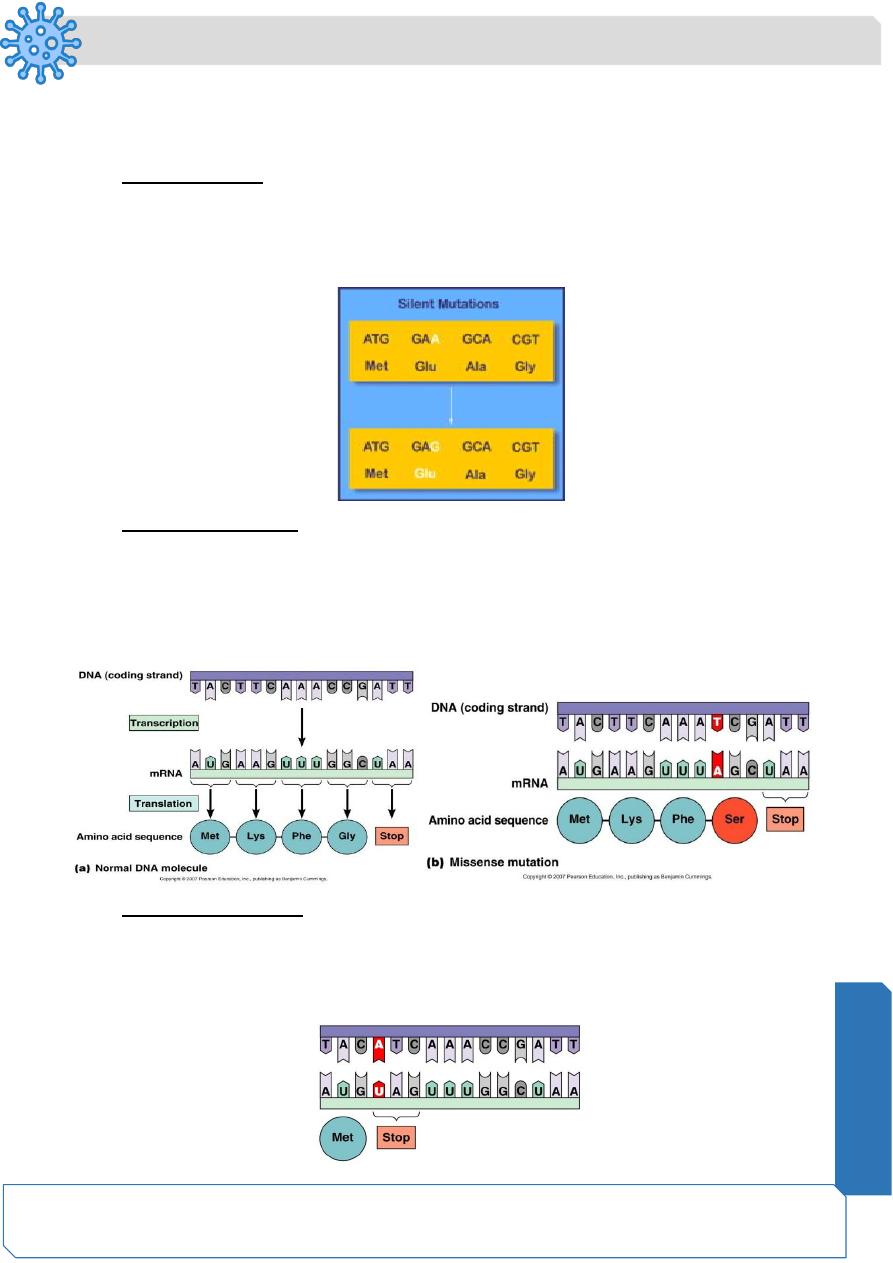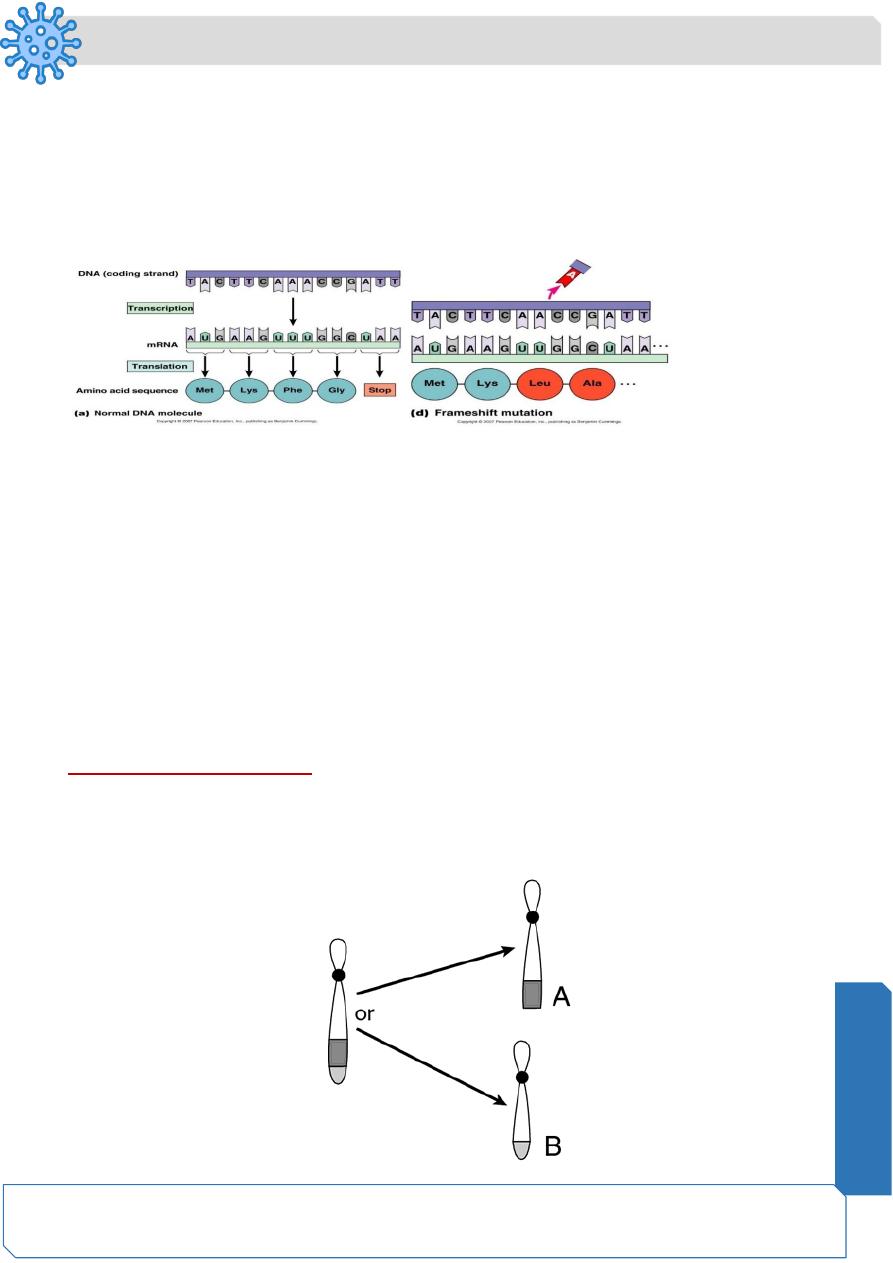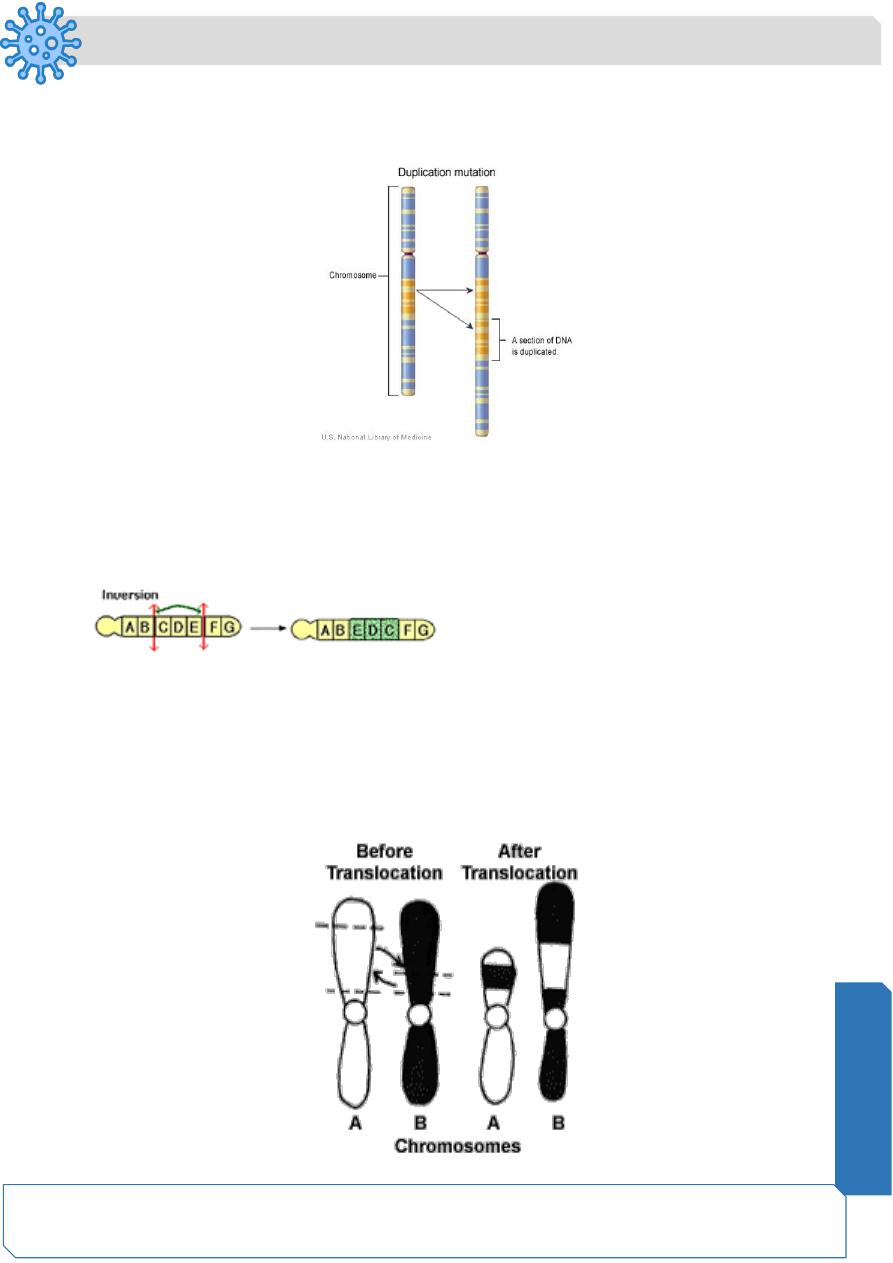
Microbiology
Notes…
1
Microbial Genetics Lecture.3 Genetic Variations
Genetic Variations : Introduction
Roughly 99.9 % of human genomes (3.2 billion bases) are the same between any
two people
The remaining tiny fraction of the genome, 0.1 % (several million bases)-makes a
person unique. This small amount of variation determines for example how a
person looks, or the diseases he or she develops
What Is the Genetic Variation?
Heritable variation within and / between populations of organisms
Sources of Genetic Variation
Recombination of chromosomes that occurs during sexual reproduction
Mutations ultimate sources of all genetic variations
Genetic Variation: Mutations
Permanent change in the DNA sequence
Outcome depends on:
what gene(s) is (are) affected
where in the genome / gene the change occurs (i.e. in the coding or non-coding
region)
the exact nature of the change
Mutations : Outcome
Most mutations have no known effect at all because they occur in non-coding regions of
the DNA
In addition, there are some mutations that do occur in coding regions of DNA yet they
have no known effect
All these are silent mutations
Some of mutations that occur in coding regions of genes have "harmless" effects
They can, for example, change the way a person "looks." Some people have blue
eyes, others brown; some are tall, others short; and some faces are oval, others
round
N
eed
Som
e H
el
p
?

Microbiology
Notes…
2
There are a group of mutations in coding regions that result in harmful effects
They cause disease because changes in the genome's instructions alter the
functions of important proteins that are needed for health
For example, diabetes, cancer, heart disease, and hemophilia all might result from
mutations that cause harmful effects
There are genetic mutations that have "latent" effects
These variations , found in coding regions, are not harmful on their own,
However, such mutations cause some people to be at higher risk for some diseases
such as cancer, but only after exposure to certain environmental agents. They may
also explain why one person responds to a drug treatment while another does not
Finally, there are genetic mutations that have “Helpful" effects
These variations, usually induced by scientists either to study a particular gene or
correct abnormal gene
This is called “gene therapy”
Mutations: How do they occur?
Spontaneous Mutations
▪ occur in the natural environment without the addition of mutagens (agents
that cause mutations)
▪ Occur randomly and spontaneously
Induced Mutations:
▪ Mutations that are created by the addition of mutagens
Spontaneous Mutations
Two types:
DNA Mutations: affect one base pair in the DNA (single nucleotide polymorphism)
Chromosomal Mutations: affect entire section of DNA on the chromosome
Spontaneous Mutations: DNA Mutations
Point mutation (single nucleotide polymorphism): a mutation that alters ONE
base of DNA sequence

Microbiology
Notes…
3
Point Mutations: Substitution
Most common type of point mutation
Mistake during DNA replication, incorrect base incorporated into DNA
➢ Silent mutation
The substitution results in a codon that codes for the SAME amino acid as the original
Therefore the protein structure and function is not altered
No effect, silent mutation
➢ Missense mutation
A base substitution results in a different codon.
Therefore a different amino acid is coded for.
This can alter the structure and function of the overall protein.
like in Sickle Cell Anemia.
➢ Nonsense mutation
The substitution results in the original codon being converted into a STOP codon
This does not “make sense” to the translation machinery so translation STOPS
This results in a truncated (shortened) protein

Microbiology
Notes…
4
Spontaneous Mutation: Base-pair deletion or insertion
Insert or delete a nucleotide- very disastrous
Shifts codons of DNA when transcribed into RNA (also called frame shift mutation)
All nucleotides downstream of mutation will be grouped into improper codons, and
wrong amino acids will be added
Protein will be non-functional
Mutations: Chromosomal Mutations
Chromosomal mutations: permanent changes in the DNA that alter the
chromosome itself
• Types
• Deletion
• Duplication
• Inversion
• Translocation
Chromosomal Mutations: Deletion
The loss of a portion of a chromosome
Deletion in chromosome 5
Cri-du-chat syndrome
Infant cries like a cat
Respiratory problems, early death

Microbiology
Notes…
5
Chromosomal Mutations: Duplication
A portion of a chromosome is duplicated (copied) more than once
Can be detrimental if it occurs within a gene region
Chromosomal Mutations: Inversions
A segment of a chromosome is broken in two places, reversed, and ligated back
together to same chromosome
Detrimental if it occurs in the middle of a gene
Chromosomal Mutations: Translocations
A piece of a chromosome is broken off and joined to a DIFFERENT chromosome
Can change the expression of genes
Very disasterous
▪ Some leukemias can result from translocations

Microbiology
Notes…
6
Mutations: Induced Mutation
Mutations are induced by either certain chemical mutagens or physical mutagens
Sometimes scientists intentionally mutate DNA to study it
Mutagens are agents or substances can cause mutations.
Induced Mutations : Chemical and Physical Mutagens
Chemical
Nitrous acid (HNO2)
- Converts adenine so it no longer pairs with thymine
- Instead pairs with cytosine
Physical
Radiation
